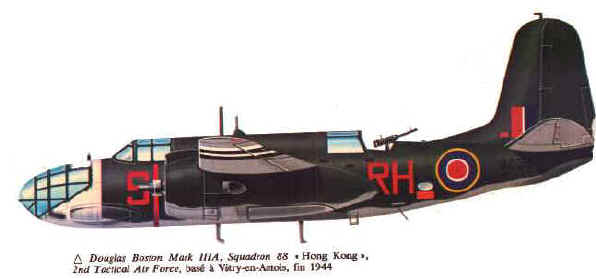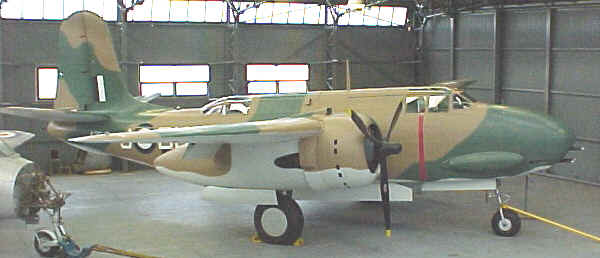 |
|
|||
|
|
||||
 |
 |
| This aircraft, 'J' for
Jessica, was originally ordered by the French but when France was
overrun by the Germans, it was to be given to the British. However,
before delivery to the British the Americans decided to give the
aircraft to the Dutch in Java. This aircraft plus eleven others were
shipped to Java, but before the aircraft's arrival in Java, the Japanese
overran the island and the aircraft were redirected to Australia.
The Boston's initial role was coastal surveillance. However, it soon changed to ground attack missions, often at tree top height. In this role the aircraft was configured with four 50 cal cannons and four .303 machine guns in the nose fixed firing position, plus mid upper gunner operated twin .303 machine guns, and two fixed rear firing .50 cal cannons. The Boston carried a normal crew of two, a pilot and gunner, but sometimes carried a spare gunner in the rear compartment It was in a Boston that the RAAF's only Victoria Cross of the Pacific war was awarded to Flt Lt W. E. Newton. For this reason, the Boston holds a special place in the history of the RAAF and Newton's VC reflects the substantial contribution No 22 SQN and its Bostons made to the Allied campaign in the New Guinea theatre of WWII. This aircraft was painstakingly restored by RAAF technicians between 1983 and 1996 after being recovered from Goodenough Island, New Guinea in 1981. The Douglas Boston aircraft was a highly effective light bomber/light attack aircraft. It was powered by a pair of Wright Cyclone 2600 supercharged engines developing 1600 horsepower. These gave the Boston an impressive top speed of 260 knots. Although the Boston was built in great numbers by the Douglas Aeroplane Company, USA, only 69 aircraft were operated by the RAAF, all serving with No 22 Squadron from 1942 to 1944. |
|
Aircraft Type:
|
Douglas A-20J Boston |
|
Mark:
|
Boston Mk
I, Mk II, Mk III/Turbinlite, Mk III/Intruder.. Havoc Mk I, Mk I/LAM, Mk I/Pandora, Mk I/Intruder Mk I/LAM Intruder |
|
Primary Role:
|
Medium Bomber |
|
First Flight:
|
prototype flew in December 1938 |
|
Date operating
|
1940-1945 |
|
Manufacturer:
|
Douglas Aircraft Co |
|
Engine:
|
Two 1,600-hp Wright Double-Row Cyclone G.R. 2600-A5B |
|
Wing Span:
|
Wingspan:
18.70 m Length: 14.63 m |
|
Empty Weight:
|
10850 kg |
|
Speed:
Ceiling: Range: |
Max.
speed: 532 km/h
7200 m 1740 km |
|
Armament:
|
Four
fixed 0.303 machine-guns in nose,
twin hand operated 0.303 machine-guns in dorsal and ventral positions. Max. bomb-load, 2,000 lbs. |
|
Crew:
|
3-4 |
